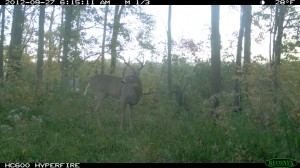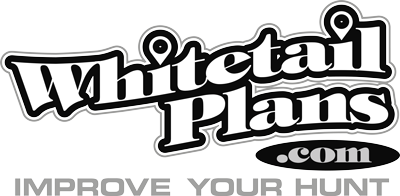Food plot location
Food plot location
Food plot location is a make or break deal. Pick a good spot with good access and natural deer movement and you can win with he right wind. Pick the wrong spot and constantly bump deer and you lose. The routine disturbance a food plot can cause will ruin many prime hunting locations, so food plot location is a big deal. So how do we go about selecting out food plot locations? We get to know our spot, and how the local deer herd uses it.
Food plot location

Food plot location starts with knowing where the deer bed. Not kind of knowing where the deer bed, exactly where the deer bed. It’s getting kind of late in the year as many food sources have already changed, but a January scouring (not a walk) of the land will let us know where the deer like to sleep. We can bump them now and they will forgive us by next fall. Walk that sanctuary you are never supposed to enter right now and make sure the deer use it. If they do not use it, it is in a bad spot. Deer dead zones are a bad pick for a sanctuary. Look and look and look and look. Look for beds. Groups of doe beds. Solo bucks beds. Look for buck sign. Scrapes and rubs, to figure out how he likes to check these bedding areas. Figure it out right now before you pick a food plot location and it will help us determine where that plot should be.
After our plan is complete we may enhance some of these areas for more use, but for right now it is most important to positively identify bedding areas.
Food plot location
Now we need to identify major trails. How does our local deer herd travel across our land. Why do they walk these trails? Where are they going? Food, water, and bedding are all destinations and really all deer care about. There is that sex thing as well, and we must consider it as well, but most of the trails we see connect food, cover and water.
Now it is time to break out the map. Color in the doe bedding areas. Color in the buck bedding areas. Color in clusters or lines of buck sign. Draw in all the trails, and label them by what they lead to or connect. ‘Bed to water’ or ‘bed to feed’. We now have a rough map that tells us and everyone else how our deer uses the piece of property. Now we can think about food plot location.
If we plan to hunt the plots, our food plot locations will be anywhere along the deer trails, or lines of deer movement, that we can safely access without the deer detecting us with their eye, ears, or nose. Consider the wind in our approach and exit. Some spots will work with a north wind. Great spot. Some spots may work with an east or south wind. Great spot. As long as we can travel to and from our stand locations without any group of deer detecting us with certain winds, we have good food plot locations. Bear in mind we will leave scent on the ground as we travel, so we do not want to cross any major deer travel areas, and trails need to be cleared of brush and debris to be safe and as odor free as possible. Sound tough? It’s really a simple concept that can be tough to execute. Change is often necessary.
We often need to alter the way our deer use the land to successfully implement a habitat program. We may have to block trails, hinge cut screens of vision, improve timber or clear cut, and add water holes in conjunction with out food plots for deer. There is no right or wrong magic fix, as these plans are as individual as the property itself, but having the background to know what will work where is key to success. Be smart about selecting your food plot location and you we see and kill more deer. Be sloppy and lazy, and you just may see less.

